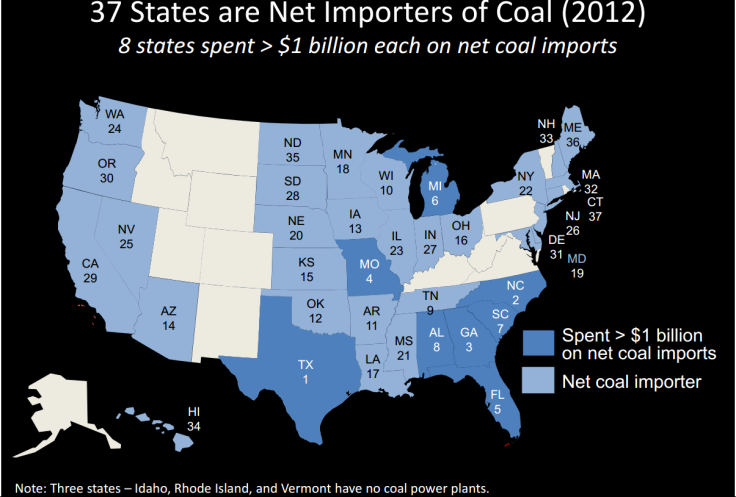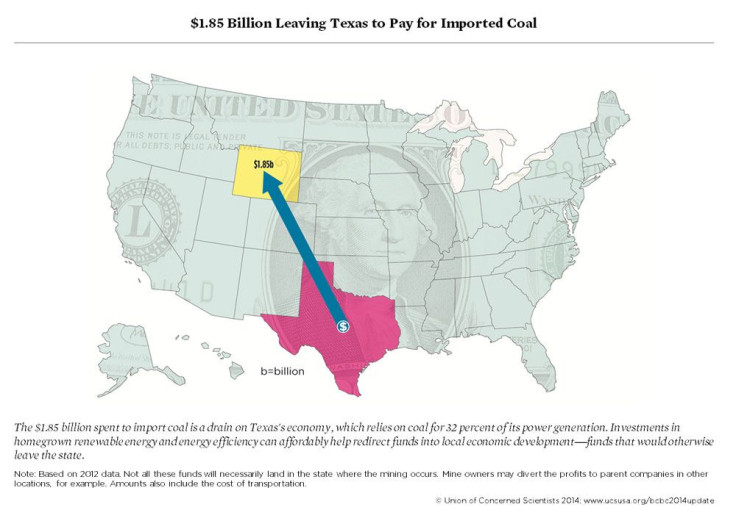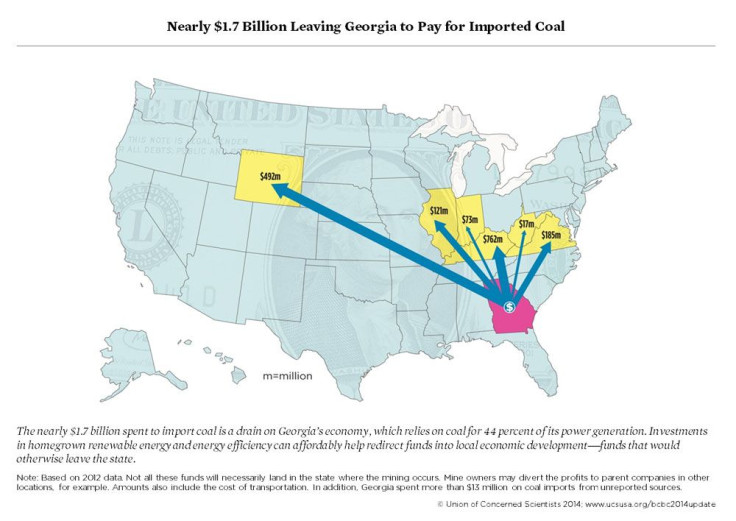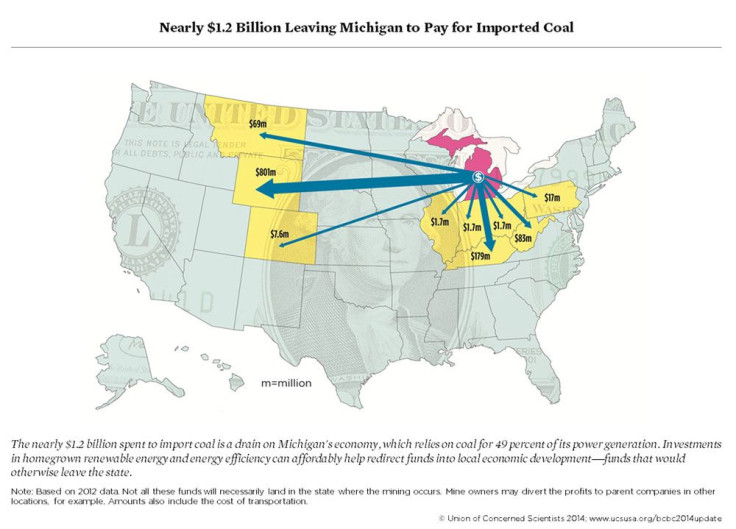37 States That Are Net Importers Of Coal Despite Drop In Overall Use [Maps]
While the U.S. is using less coal to produce electricity, at least 37 states continue to be net importers of the hydrocarbon, putting heavy economic burdens on local economies, according to a new study released by the Union of Concerned Scientists (USC) Tuesday.
The nonprofit science advocacy group found that in 2012, the 37 states spent $19.4 billion to import 433 million tons of coal from other states and nations. The data used in the study was the most recent available.

“Power providers in many states are taking billions of dollars out of their local economies to send across state lines and, in some cases, overseas,” Jeff Deyette, assistant director of energy research at UCS, said. “This money can be better spent on investments in homegrown clean energy sources, which keep more money in these states and helps support local economies.”
The top 10 states, ranked in order, that are most dependent on coal imports are Texas, North Carolina, Georgia, Missouri, Florida, Michigan, South Carolina, Alabama, Tennessee and Wisconsin.
Texas, the No. 1 state with the most out-of-state coal imports, spent $1.85 billion, which is surprising considering the Lone Star State is the top oil and gas producer in the United States.

The amount of imports by states are still high, but between 2008 and 2012, coal generation and imports declined by approximately a quarter, from $25.7 billion to $19.4 billion. The cost of coal imports from other countries dropped by 75 percent.
Georgia, for example, spent $1.7 billion on imported coal, which represents 33 percent of the state’s electricity generation in 2012.

Michigan generated 49 percent of its in-state electricity from coal in 2012, costing nearly $1.2 billion.

The decline in exports is indicative of more and more utilities turning to more competitive natural gas and renewable energy to help generate electricity.
As President Barack Obama implements his climate action plan to achieve 17 percent reduction of greenhouse gases by 2020 from 2005 levels, coal-power plants are slowly being replaced with new, efficient natural gas-fired plants.
In fact, a new study found that a combined-cycle natural gas-fired power plant releases 40 percent fewer carbon emissions than coal-fired plants.
The combined-cycle power plant is a new type of plant that collects the heat/exhaust produced by burning the natural gas and recycles it to produce more electricity.
© Copyright IBTimes 2024. All rights reserved.






















